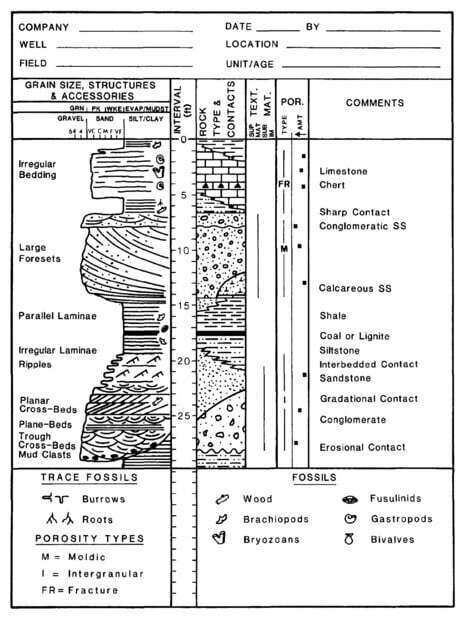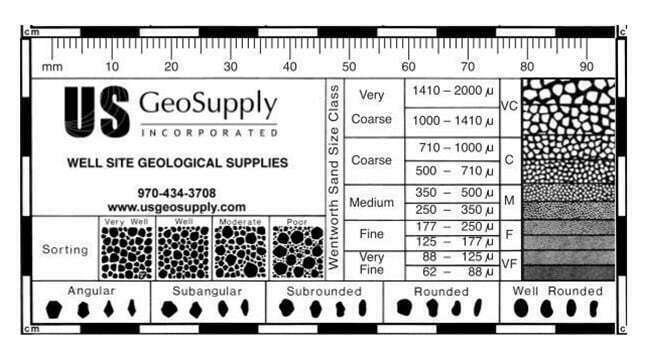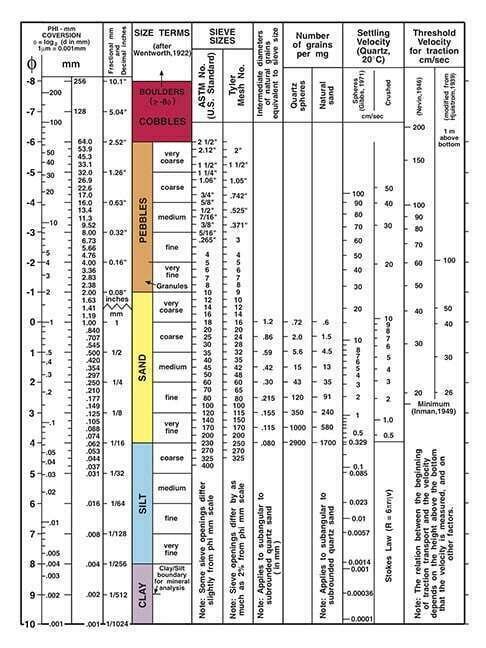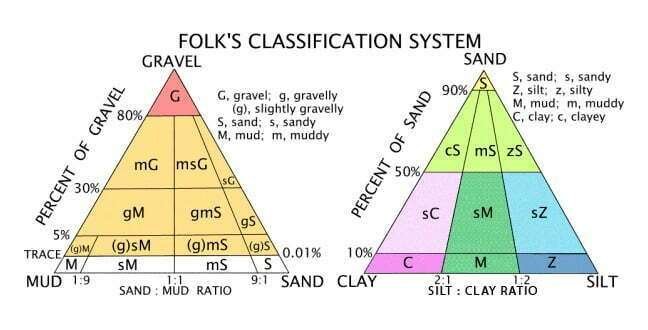Grain Size, Sorting and Texture
Clastic grain sizes and carbonate rock types are documented as a continuous vertical curve, which reflects the variations in the depositional energy of the sediments (Figure 1). By convention, grain size increases to the left, copying the typical gamma ray response in a sand/shale sequence.

The grain size is ascertained by comparison with a grain size comparator chart (Figure 2), or a visual pattern. A high quality hand lens magnifier and a reflecting light binocular microscope are essential for accurate grain size descriptions.

Textural characteristics of the rock include its grain size, grain size distribution and the degree of shaliness. These characteristics influence the porosity, permeability and the interstitial water saturation. Another commonly used scale for assessing grain size in clastics is the Wentworth Scale (1922). This scale, shown in modified form in Figure 3, links medium, fine or other reported grain sizes to a specific grain diameter.

The detrital clay content and the sorting and roundness of grains are factors in the textural maturity of sandstones. Folk’s (1974) model for textural maturity is well respected and followed by many in the oil industry (Figure 4).

 Petro Shine The Place for Oil and Gas Professionals.
Petro Shine The Place for Oil and Gas Professionals.



